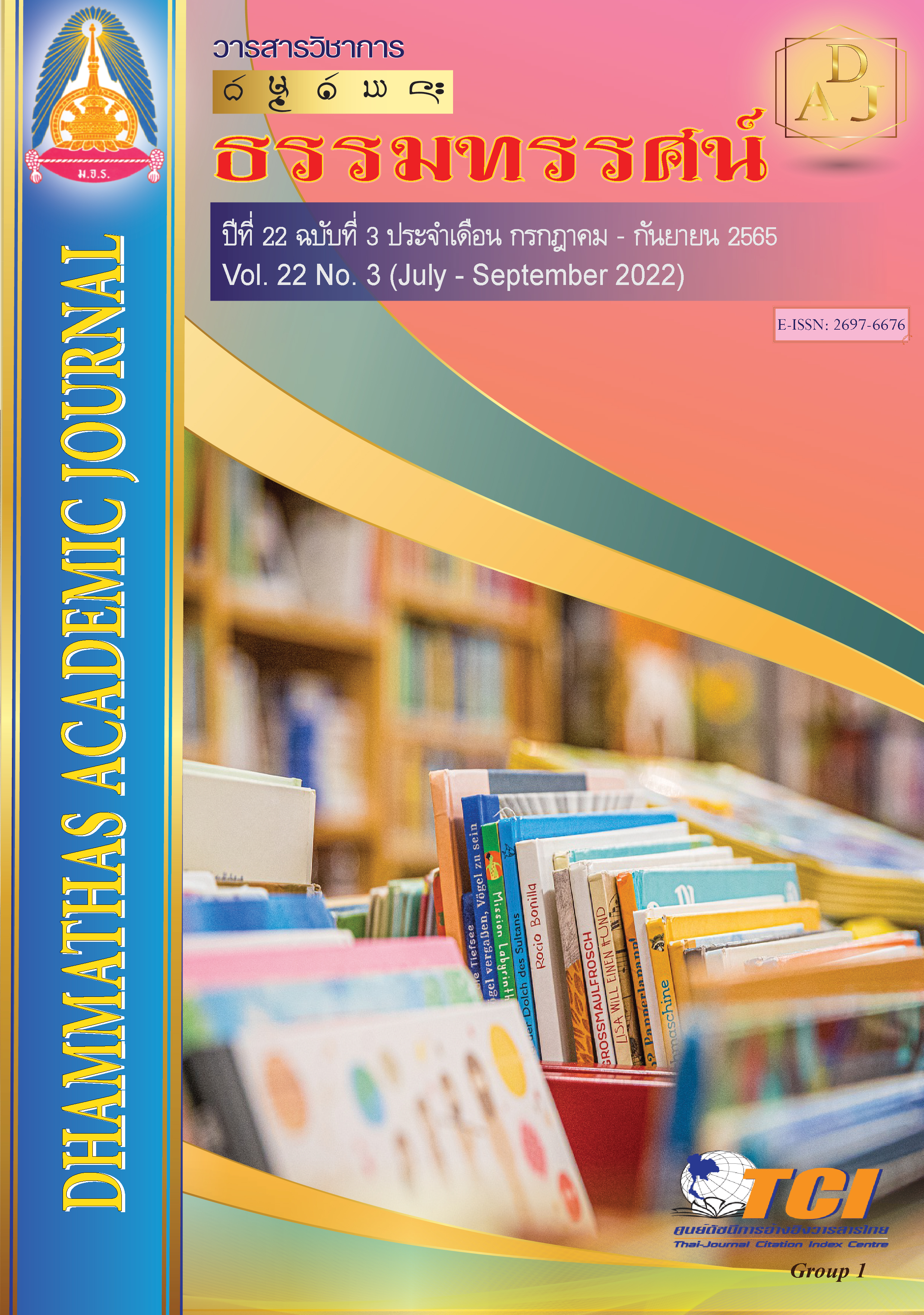Long-Term Care Model for the Elderly with Dependency
Main Article Content
Abstract
The objectives of this research were: 1) to study the conditions and problems of a long-term care model for the dependent elderly; 2) to develop a long-term care model for the dependent elderly; and 3) to assess a long-term care model for the dependent elderly. Using mixed research methods and Quantitative data was analyzed using frequency, percentage, mean and standard deviation. Qualitative data was analyzed by content analysis.
The results of the study found that:
1. The conditions of a long-term care model for the dependent elderly were primarily met by family members. Local Administrative Organization had a role to play in administering the long-term care fund for the dependent elderly at the local level. The long-term care problems for the dependent elderly were totally at a moderate level. When considering each aspect, the most problematic aspect was the personnel in operations, followed by the policy and monitoring while the least problematic aspect was the family and community participation.
2. The long-term care model for the dependent elderly was appropriate and consisted of 1) formulating long-term care policies for the dependent elderly at the provincial level, district level and local administrative. 2) The administration using the center for the Improvement of quality of Life for the elderly as a base under the academic support of health promoting hospital, community hospital or service unit. 3) There was analysis, synthesis, and care planning for the dependent elderly by integrating relevant and authorized agencies. 4) Encourage participation in families, communities, for sustainable care for the dependent elderly.
3. The results of the evaluation of long-term care model for the elderly with dependency found that the model was appropriate. Overall, it was at the highest level. The most appropriate was the participation followed by the policy formulation, while the least appropriate aspect was the integration.
Article Details

This work is licensed under a Creative Commons Attribution-NonCommercial-NoDerivatives 4.0 International License.
เพื่อให้เป็นไปตามกฎหมายลิขสิทธิ์ ผู้นิพนธ์ทุกท่านต้องลงลายมือชื่อในแบบฟอร์มใบมอบลิขสิทธิ์บทความ ให้แก่วารสารฯ พร้อมกับบทความต้นฉบับที่ได้แก้ไขครั้งสุดท้าย นอกจากนี้ ผู้นิพนธ์ทุกท่านต้องยืนยันว่าบทความ ต้นฉบับที่ส่งมาตีพิมพ์นั้น ได้ส่งมาตีพิมพ์เฉพาะในวารสาร วิชาการธรรม ทรรศน์ เพียงแห่งเดียวเท่านั้น หากมีการใช้ ภาพหรือตารางของผู้นิพนธ์อื่นที่ปรากฏในสิ่งตีพิมพ์อื่นมาแล้ว ผู้นิพนธ์ต้องขออนุญาตเจ้าของลิขสิทธิ์ก่อน พร้อมทั้ง แสดงหนังสือที่ได้รับการยินยอมต่อบรรณาธิการ ก่อนที่บทความจะได้รับการตีพิมพ์References
ชัยยา ปานันท์ และบุญมา สุนทราวิรัตน์. (2564). ระบบการดูแลระยะยาวสำหรับผู้สูงอายุที่มีภาวะพึ่งพิง: มุมมองผู้ให้บริการ. วารสารวิชาการสาธารณสุขกระทรวงสาธารณสุข, 30(ฉบับเพิ่มเติม), 87-101.
ทัศนา บุญทอง และคณะ. (2562). รูปแบบการพัฒนาระบบการดูแลระยะยาว. นนทบุรี: สภาการพยาบาล.
ปิยวัฒน์ เกตุวงศา และคณะ. (2561). กลไกของชุมชนและองค์กรปกครองส่วนท้องถิ่นในการดูแลครัวเรือน เปราะบาง: กรณีศึกษาครัวเรือนข้ามรุ่น และครัวเรือนที่มีผู้สูงอายุที่อยู่คนเดียว. (รายงานการวิจัย). กรุงเทพฯ: สถาบันวิจัยประชากรและสังคม มหาวิทยาลัยมหิดล.
วิชัย โชควิวัฒน. (2562). เรียนรู้จากญี่ปุ่น ระบบการดูแลผู้สูงอายุติดบ้านติดเตียง. กรุงเทพฯ: สามดีพริ้นติ้งอีควิปเมนท์.
วรวรรณ ชาญด้วยวิทย์ และยศ วัชระคุปต์. (2560). ระบบประกันการดูแลระยะยาว: ระบบที่เหมาะสมกับประเทศไทย. กรุงเทพฯ: วิฑูรย์การปก.
วิราภรณ์ โพธิศิริ และคณะ. (2559). การศึกษาต้นแบบของการบูรณาการระบบการดูแลผู้สูงอายุระยะยาวในกลุ่มผู้สูงอายุที่มีภาวะพึ่งพิง. (รายงานการวิจัย). กรุงเทพฯ: วิทยาลัยประชากรศาสตร์ จุฬาลงกรณ์มหาวิทยาลัย.
ศิริพันธุ์ สาสัตย์ และถาวร สกุลพาณิชย์. (2563). การสังเคราะห์สถานการณ์และข้อเสนอในการพัฒนาและขับเคลื่อนนโยบายของประเด็นสำคัญทางยุทธศาสตร์ประเด็นสุขภาวะกับสังคมสูงวัย. กรุงเทพฯ: สำนักงานคณะกรรมการสุขภาพแห่งชาติ (สช.).
สัมฤทธิ์ ศรีธำรงสวัสดิ์ และคณะ. (2561). โครงการวิจัยเพื่อพัฒนาระบบการดูแลระยะยาว (Long term care) สำหรับผู้สูงอายุที่มีภาวะพึ่งพิง ภายใต้ระบบหลักประกันสุขภาพแห่งชาติ. กรุงเทพฯ: ดีเซมเบอร์.
สำนักงานวิจัยและพัฒนากำลังคนด้านสุขภาพ. (2563). การดูแลระยะยาวเพื่อภาวะพึ่งพิงอย่างมีคุณภาพในสังคมไทย. นนทบุรี: ภาพพิมพ์.
สำนักปลัดกระทรวงสาธารณสุข กระทรวงสาธารณสุข. (2562). แนวทางการปฏิบัติงานด้านสาธารณสุขในระดับพื้นที่. นนทบุรี: ม.ป.พ.
Yamane, T. (1973). Statistics: An Introductory Analysis. (3rd Ed.) New York: Harper and Row Publications.

